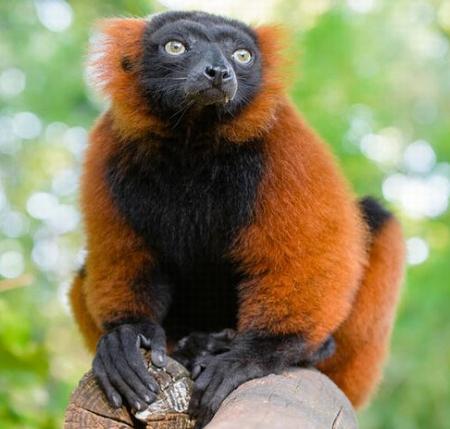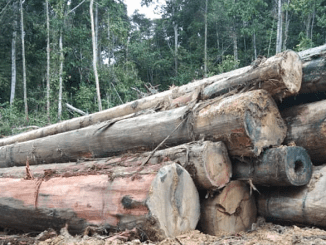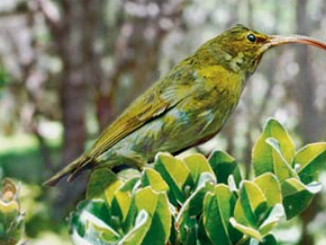
GLAND, Switzerland, April 22, 2021 (ENS) – The new Species Threat Abatement and Restoration, STAR, metric developed by conservationists for the first time allows business, governments and civil society to assess their potential contributions to reducing global species loss, and it can be used to calculate national, regional, sector-based, or institution-specific targets.
The work was led by the International Union for the Conservation of Nature, IUCN, Species Survival Commission’s Post-2020 Taskforce. The project was hosted by Newcastle University in the UK in collaboration with scientists from BirdLife International and 53 other institutions in 21 countries around the world.
Actions that benefit more species, and in particular the most threatened species, yield higher STAR scores. The results reveal that safeguarding Key Biodiversity Areas covering just nine percent of land surface could reduce global extinction risk by almost half, 47 percent.

Ensuring sustainability of crop and timber production would relieve the most damaging factors that drive land-based wildlife decline, the participant scientists say, warning that unsustainable farming and forestry are responsible for 40 percent of the overall extinction risk to amphibians, birds and mammals.
“For years, a major impediment to engaging companies, governments and others in biodiversity conservation has been the inability to measure the impact of their efforts,” explained IUCN Director General Dr. Bruno Oberle.
“By quantifying their contributions, the new STAR metric can bring all these actors together around the common objective of preserving the diversity of life on Earth. We need concerted global action to safeguard the world’s biodiversity, and with it our own safety and wellbeing,” Dr. Oberle said.
The authors applied the new STAR metric to all species of amphibians, birds, and mammals. These groups of species are assessed in detail on the authoritative IUCN Red List of Threatened Species, and the STAR results add to that body of knowledge.

Removing threats to wildlife from crop production would reduce global extinction risk across these wildlife groups by 24 percent. Ending threats caused by unsustainable logging globally would reduce this by a further 16 percent, while removing threats associated with invasive alien species would bring a further 10 percent reduction, analysis using the STAR metric revealed.
Detailed in the April 8 issue of the journal “Nature Ecology & Evolution,” the new STAR metric also can be used to calculate the benefits of restoration. The scientists found that global extinction risk could potentially be reduced by 56 percent through comprehensive restoration of threatened species’ habitats.
While every country contributes to the global STAR score, conservation in five mega-diverse countries could reduce global extinction risk by 31 percent, with Indonesia alone potentially contributing seven percent to that risk reduction.
“We are in the midst of a biodiversity crisis and resources are limited, but our study shows that extinction risk is concentrated in relatively small areas with greater numbers of highly threatened species. The STAR methodology allows us to consistently measure where and how conservation and restoration could have the biggest impact,” said Louise Mair of Newcastle University, lead author of the study.
“At the same time,” she said, “our analysis shows that threats to species are omnipresent, and that action to stem the loss of life on Earth must happen in all countries without exception.”
Researchers studied a rubber plantation’s effect on the Sumatran tiger © Pen Ash / PixabayResearchers studied a rubber plantation’s effect on the Sumatran tiger © Pen Ash / Pixabay
To show how the metric can be used by individual institutions, the authors applied STAR to an 88,000-hectare commercial rubber initiative on the island of Sumatra, Indonesia, where the major threats to biodiversity are crop production, logging and hunting.
By abating these threats within its concession area, the rubber company could report reducing overall extinction risk by 0.2 percent across Sumatra, 0.04 percent across Indonesia and 0.003 percent globally.
These scores would be due in part to safeguarding the area’s populations of tigers, Panthera tigris, and Asian elephants, Elephas maximus, both classed by the IUCN Red List as Endangered, as well as Leaf-nosed Bats Hipposideros orbiculus, which are only found in the region and classed as Vulnerable to extinction.
Measuring contributions to biodiversity targets and assessing biodiversity-related risk, both facilitated by STAR, can feed into companies’ Environmental, Social and Governance reporting.
“The STAR metric provides a powerful new tool that will be valuable to governments, the private sector and others for assessing potential contributions of different actions in different locations to global conservation of species,” said Melanie Heath, director of Science, Policy & Information at BirdLife International.
The STAR metric will be available in time to inform major international negotiations for nature in 2021. These include the IUCN World Conservation Congress in Marseille, France from September 3-11, followed by the 15th Conference of the Parties to the Convention on Biological Diversity, being held from October 11-24 in Kunming, China.
“The post-2020 Global Biodiversity Framework seeks to identify specific actions that will improve the overall state of biodiversity,” said Elizabeth Maruma Mrema, executive secretary of the Convention on Biological Diversity. “STAR provides a way to measure how reducing threats in a particular place can decrease overall extinction risk, linking proposed actions to achieving the Convention’s vision of living in harmony with nature.”
Featured Image: Sumatran tiger. Today just 400-500 tigers still live on the Indonesian island of Sumatra. 2011 (Photo by Bernard Spragg)
© 2021, Environment News Service. All rights reserved. Content may be quoted only with proper attribution and a direct link to the original article. Full reproduction is prohibited.



